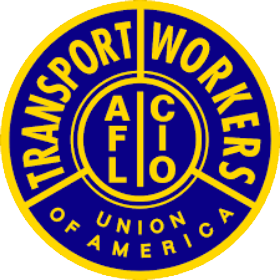OP-ED – NEW YORK DAILY NEWS
April 3, 2024
Being a crash test dummy is the role New Yorkers insanely will be thrust into under a plan to let Big Tech test autonomous vehicles on NYC streets, Mayor Adams announced last week.
“The technology is coming whether we like it or not, so we’re going to make sure we get it right,” Adams said.
Well, we know where the technology has been: California, Arizona, and a few other states. Forget the tech-bro sales pitches. It’s been an unwanted disaster for many.
In San Francisco, autonomous vehicles have slowed police officers responding to crimes, blocked firefighters racing to fires, and impeded ambulances. There have been crashes, injuries, traffic jams, trash trucks trapped on streets, vehicle recalls, and even the death of a pet.
The situation got so bad for working people the city sued the state for the ability to limit the service. California even suspended one of two licenses it previously granted AV companies after they lied during an investigation.
In one case, a robotaxi struck an already injured pedestrian. It stopped, but then drove again, dragging the woman 20 feet down the road.
The technology is incapable today of being safely intermingled into a living, breathing, constantly changing and unpredictable urban environment. If AVs can’t handle San Francisco, they will fare far worse here. New York is America’s most densely populated big city. There’s a dizzying amount of activity from an unmatched number of pedestrians, bicyclists, pedicabs, and motorists.
Pedestrians cross streets in Manhattan like nowhere else in the country. They do whatever they want, whenever they want. These vehicles are not prepared to deal with that kind of pedestrian interaction.
Companies like Waymo claim a stellar safety record. But Waymo logged the vast majority of its 7 million miles in Phoenix. There’s no comparison to NYC. The population and density are not the same. The streets in Phoenix are on a wide, flat grid. Just 4.2 inches of rain fell there last year. It’s the equivalent of tee-ball.
NYC’s plan will require self-driving cars to have an on-board monitor. The hope is the monitor will quickly take control if necessary. But that’s just a hope. A self-driving car with a so-called safety driver killed a pedestrian in Arizona. The presence of a backup driver is a cold comfort to someone who is injured, or loses a loved one, because an autonomous vehicle went on the fritz.
Greedy companies like Waymo and Cruise have one goal: reaping enormous profits. They drool in anticipation of the day when they can operate taxis and trucks without humans siphoning off revenues. Humans who need jobs to feed their families, pay the rent, and survive. They don’t care that hundreds of thousands will lose their jobs in just those two industries alone, or that we could very well wind up with more cars on the streets, not less.
The issues related to AVs are too critical to allow individual cities and states to set their own rules without greater federal involvement. Before we allow driverless cars to hit our streets, we need federal assurances that the technology has advanced far enough to ensure the public’s safety.
We need enforceable standards that hold the manufacturers liable for the damage they cause. And we need clear limits on what kinds of vehicles can be fully autonomous. Driverless vehicles, for example, should not be used for public mass transportation.
Technology can be a tool to help bus operators avoid accidents, but it can never adequately replace them. In cities and towns across the U.S., they do much more than drive. They assist the elderly and wheelchair-users get on board. They spot lost children wandering the streets alone, call first-responders about crimes in progress, assist women going into labor, help disorientated elderly passengers, and more.
Bus operators rely on common sense and street smarts when confronted with unexpected events and emergencies, ranging from flash floods to terrorism. Bus operators memorably went off route and navigated around debris to safely evacuate people fleeing downtown Manhattan on 9/11.
A bus with an empty driver’s seat can’t do any of that.
In addition to setting automation limits, we need a greater realization of catastrophic job losses that are around the bend. We need real transparency in data collection so the public can call out corporate spin when crashes happen.
In the meantime, New Yorkers going about their lives — walking to the park or subway, driving to the store or church, bicycling to work — shouldn’t be forced to be subjects of a technology experiment designed to make rich profiteers even richer.
Tate is the international administrative vice president of the Transport Workers Union.

